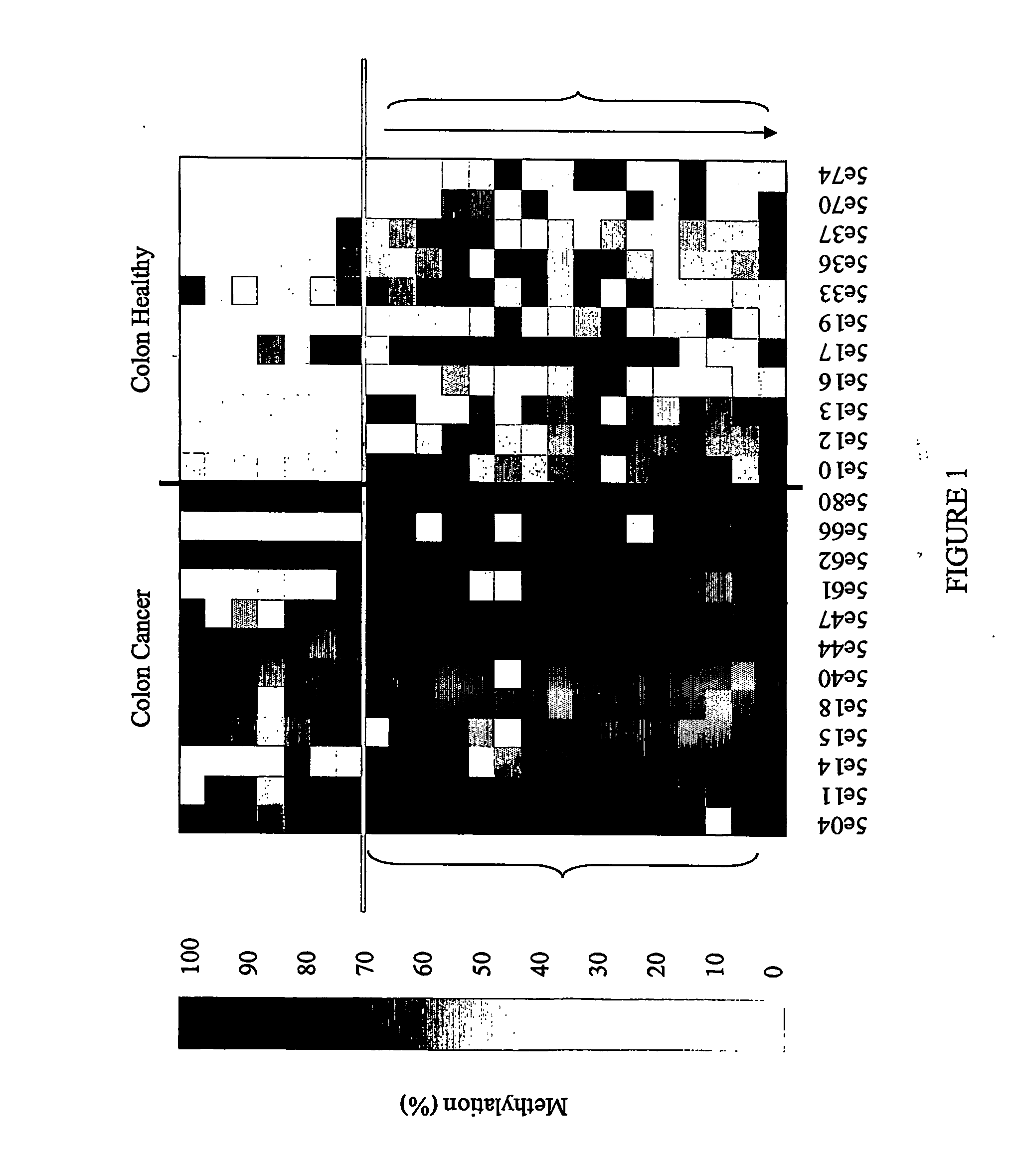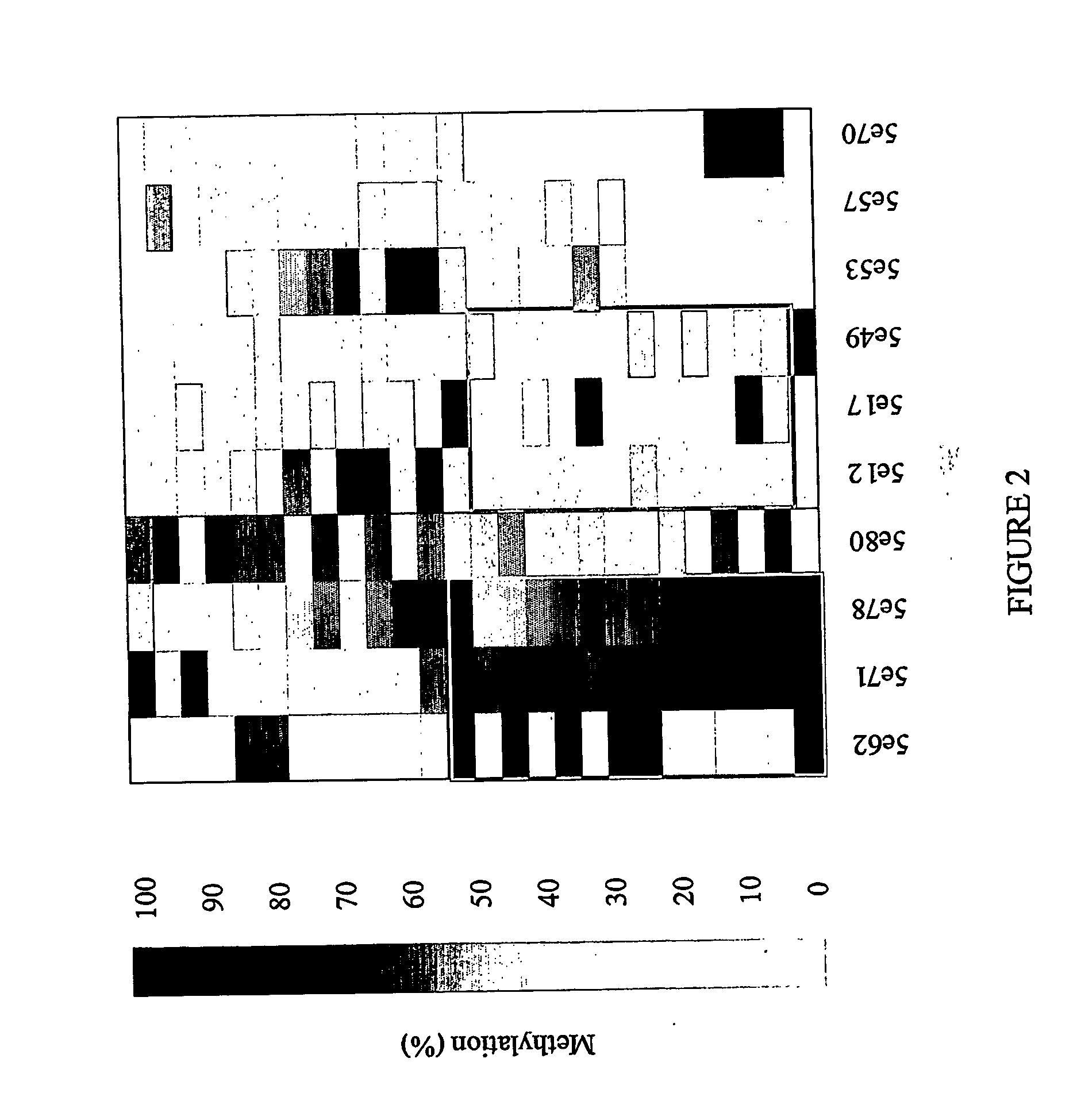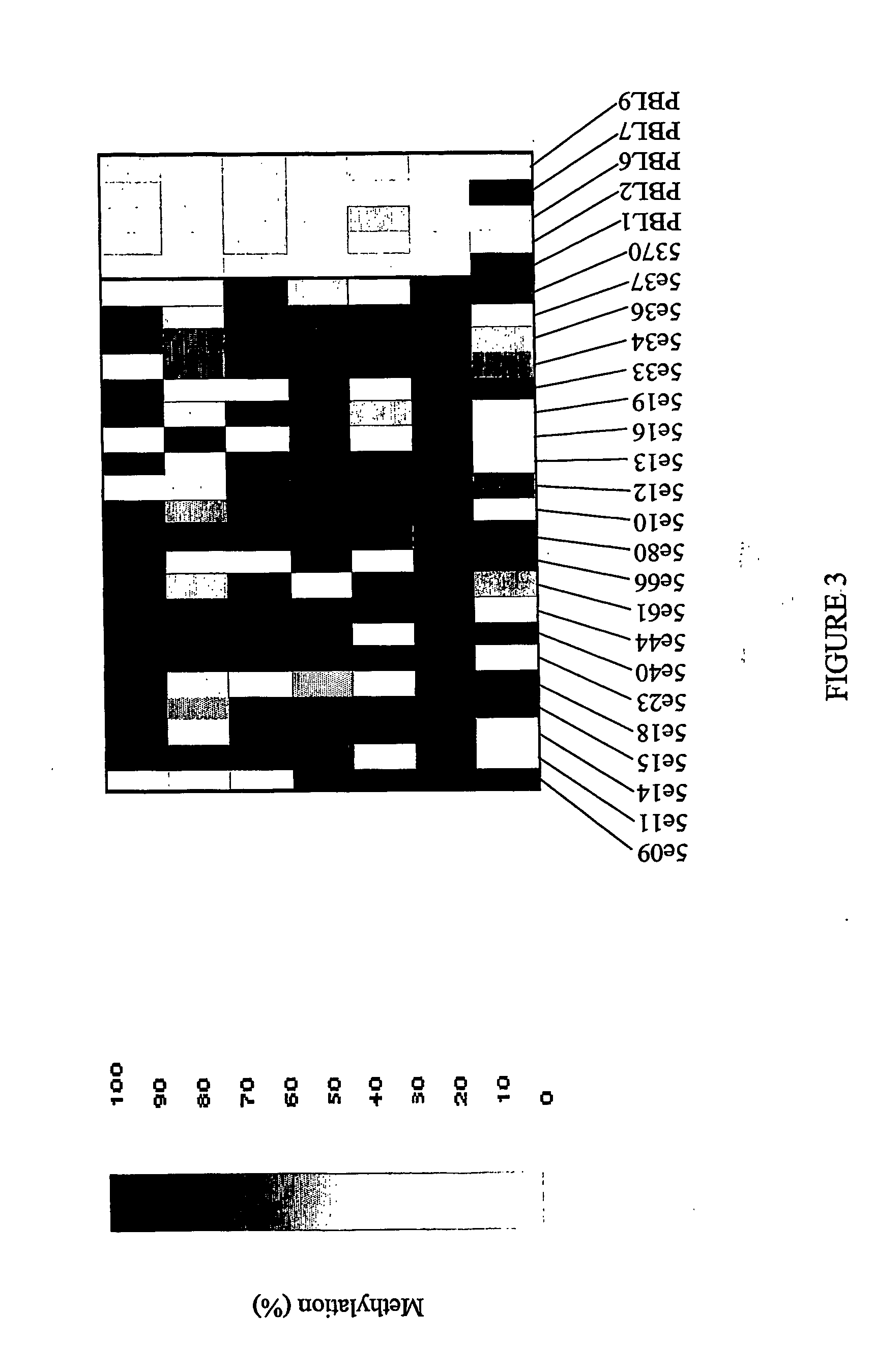Methods and nucleic acids for the analysis of colorectal cell proliferative disorders
a colorectal cancer and proliferative disorder technology, applied in the field of genemic dna sequences, can solve the problems of low survival probability of metastatic disease, limited sigmoidoscopy, and inability to implement widespread colorectal cancer screening, etc., to achieve accurate and highly specific classification, improve diagnosis, treatment and monitoring, and improve the effect of detection accuracy
- Summary
- Abstract
- Description
- Claims
- Application Information
AI Technical Summary
Benefits of technology
Problems solved by technology
Method used
Image
Examples
example 1
Restriction Enzyme Analysis
[0138] Identifying one or more primary differentially methylated CpG dinucleotide sequences using a controlled assay suitable for identifying at least one differentially methylated CpG dinucleotide sequences within the entire genome, or a representative fraction thereof.
[0139] All processes were performed on both pooled and / or individual samples, and analysis was carried out using two different Discovery methods; namely, methylated CpG amplification (MCA), and arbitrarily-primed PCR (AP-PCR).
[0140] AP-PCR. AP-PCR analysis was performed on sample classes of genomic DNA as follows:
[0141] 1. DNA isolation; genomic DNA was isolated from sample classes using the commercially available Wizzard™ kit;
[0142] 2. Restriction enzyme digestion; each DNA sample was digested with 3 different sets of restriction enzymes for 16 hours at 37° C.: RsaI (recognition site: GTAC); RsaI (recognition site: GTAC) plus HpaII (recognition site: CCGG; sensitive to methylation); a...
example 2
Bisulfite Sequencing
[0160] For bisulfite sequencing amplification primers were designed to cover each individual sequence when possible or part of the 1000 bp flanking regions surrounding the position. Samples used in Example 1 were utilized for amplicon production in this phase of the study. Ten to fifteen samples each of DNA from normal adjacent colon, colon adenocarcinoma, and normal peripheral blood lymphocytes (PBLs) were treated with sodium bisulfite and sequenced. Initially, sequence data was obtained using MegaBace technology and later sequences were derived using an ABI 3700 device. Traces obtained from sequencing were normalized, and percentage methylation values calculated using an ESME™ analysis program (Epigenomics, AG, Berlin).
Results of Bisulfite Sequencing.
[0161] The following properties were noted (screened for):
[0162] (1) Bisulfite sequencing indicates differential methylation of a CpG site between selected classes of samples (Fisher score);
[0163] (2) Co-meth...
PUM
| Property | Measurement | Unit |
|---|---|---|
| diameter | aaaaa | aaaaa |
| temperature | aaaaa | aaaaa |
| temperature | aaaaa | aaaaa |
Abstract
Description
Claims
Application Information
 Login to View More
Login to View More - R&D
- Intellectual Property
- Life Sciences
- Materials
- Tech Scout
- Unparalleled Data Quality
- Higher Quality Content
- 60% Fewer Hallucinations
Browse by: Latest US Patents, China's latest patents, Technical Efficacy Thesaurus, Application Domain, Technology Topic, Popular Technical Reports.
© 2025 PatSnap. All rights reserved.Legal|Privacy policy|Modern Slavery Act Transparency Statement|Sitemap|About US| Contact US: help@patsnap.com



